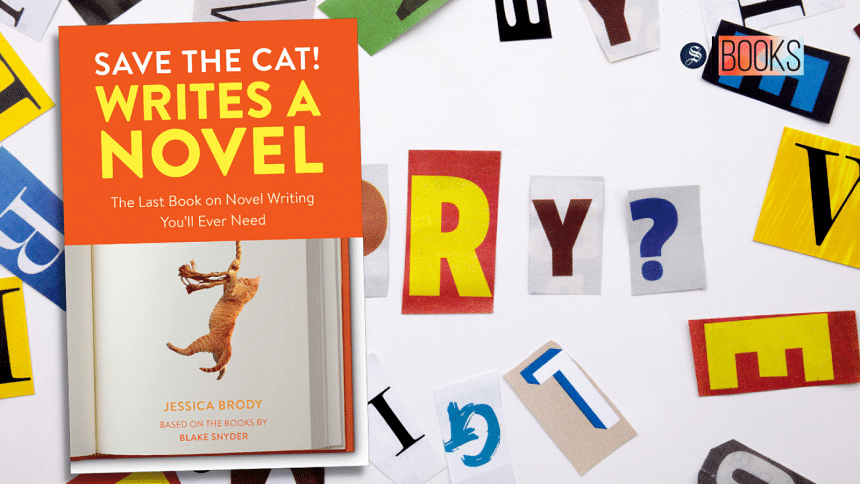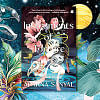A writer’s odyssey

Like many of you who might be reading this, I too, am an aspiring writer.
In my attempts to put together a good story, after several abandoned drafts and unsalvageable plots, I decided to devote myself to learning the craft inside out.
So I turned to books written to teach me exactly that. With every book I picked up, I started a project in an effort to put into practice the theory and immediately test its effectiveness. In the process, I discovered my weaknesses, my strengths and everything in between.
Save The Cat! was the first book I picked up to teach me about the wonders of plot. The well known book by Jessica Brody, most well known for the beat sheet that it offers, helps writers follow a more digestible format of the three-act structure of a screenplay.
Before dealing with the more complex practices, however, as any writer knows, one needs to start with the basics. And according to the book, whether you are a plotter or a panster, the first step, almost always, is choosing your protagonist and giving them a motive. For without motive, there is no story. In fact, if you think back hard enough, most stories will have taught us by now that a protagonist must have two things in order for there to be a story worth reading. A want and a need.
In fact, the famous actor, writer, and director Greta Gerwig in her process of writing, goes a few steps further and suggests giving characters what she refers to as 'a secret' to help really bring them to life.
What I didn't know at the time of reading this book and practising what it taught me was that I was missing this very fundamental step—properly fleshing out my characters. The downfalls of which I had to learn the hard way while working through my first draft.
However, for those who feel confident in their characters and are now trying to find an organised way to put together the external plot, Save the Cat! is a great way to kick things off.
So, without further ado, here is what I learned during my time spent with Save the Cat!.
For someone who spent a considerable amount of time pantsing, reading 'Save the Cat!' brought about my first attempt at actually trying to organise the plot of my own fiction. To minimise the number of rewrites that a story was taking me and just how hopeless my first draft would end up being, considering all the countless changes the plot had undergone from when I started my draft to when I ended it.
Save the Cat! acts as a sort of roadmap. Using existing plots as examples, the book teaches you the art of outlining using the age-old three act structure. Breaking down the acts into sizable bits and placing them in patterns that are easy to recognise, this book is your go-to if you want to learn how to work on building a foolproof external plot.
Even just for the curious, reading this book helps accustom you to a crucial way of thinking. This eventually helps you catch the common patterns of a story the next time you watch a movie or read a book. And this understanding, I have learned, becomes crucial to our understanding of story and henceforth our practices in building one. Pointing out the very things that all good stories hold in common, it helps us learn the ebb and flow of what makes a story worth reading.
As it was for most, the highlight of the book for me also was the beat sheet that helped throw the events of the plot into a linear flow. Jessica Brody helps master the external plot and exactly when and how to lay them out so as to come away with an organised story or at least some semblance of one for those of us too scattered to put anything coherent together. Having read this, I found that for a writer like myself, this was the second step in preparing to write a novel.
As for the point about sufficiently developing your characters: a character is fully fleshed out when they are the ones who dictate the plot rather than the other way round.
I mentioned 'external' when describing the plot and for those who may not be familiar, it is essential to understand that internal conflict and the internal plot have very directly to do with the internalised struggles and developments that your character starts out with and undergoes, while the external is more concerned with events of the story itself.
Ultimately, I came away from this book gaining a much better understanding on the flow of the events in a story. For those who already have their internal conflicts set and the characters are all fleshed out, Save the Cat! will help you take the external events of your story and put them in a sequence, making sure you hit all the right peaks and valleys in a story to build a captivating one.
Till then, keep writing!
Syeda Erum Noor is devoted to learning about the craft of writing and is an avid reader who can talk endlessly about the magic of books. Reach her at @syedaerumnoorwrites.

 For all latest news, follow The Daily Star's Google News channel.
For all latest news, follow The Daily Star's Google News channel. 










Comments